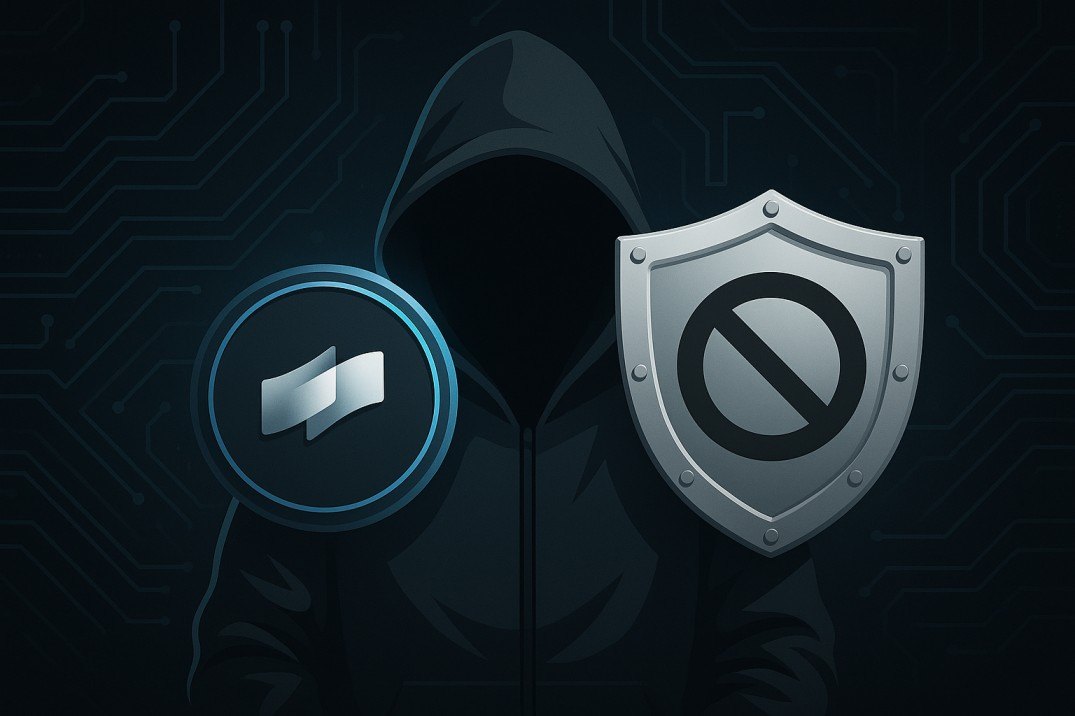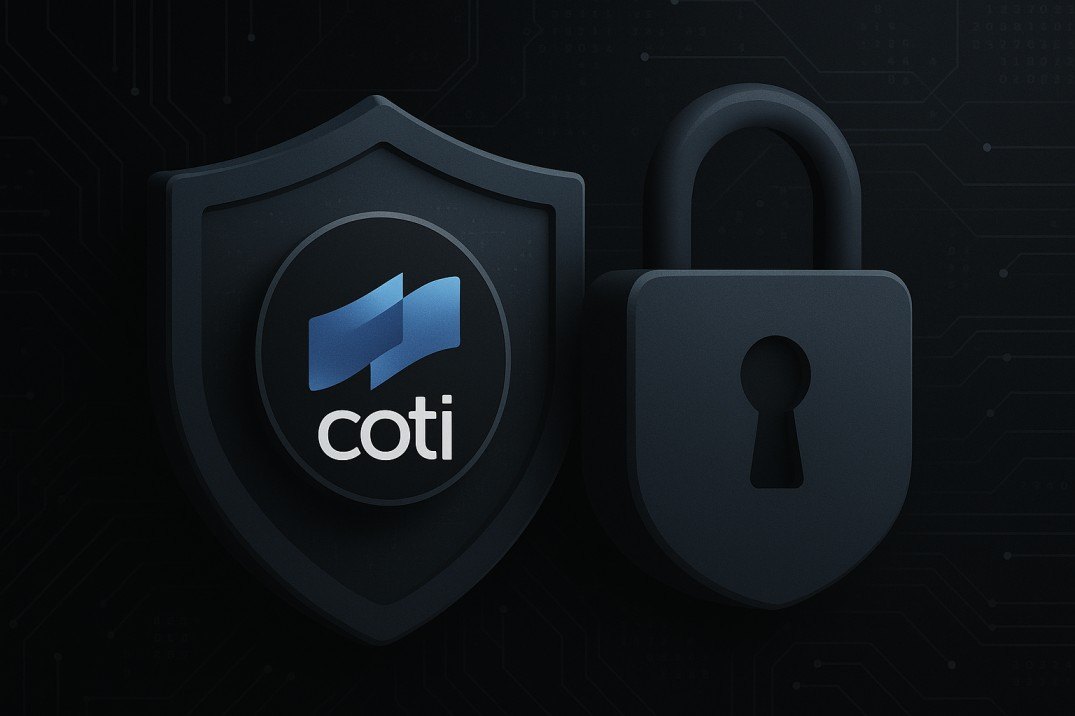TL;DR
- Privacy has always been crypto's most controversial pillar, often caught between personal sovereignty and state surveillance.
- Most privacy coins face harsh regulatory crackdowns, leaving their survival uncertain.
- COTI introduces a compliance-hybrid privacy layer built for selective disclosure, not total opacity.
- Its garbled circuits technology enables ultra-fast, confidential computation that fits within regulatory frameworks.
- COTI is already being tested in high-stakes environments - including European CBDC pilots.
- Unlike traditional privacy coins, COTI's privacy can be audited when required, making it harder for regulators to shut down.
Crypto began with a promise: financial freedom outside the walls of surveillance. But that promise quickly ran into a wall of its own - governments. Over the past decade, privacy coins have been banned, restricted, or delisted from major exchanges as regulators doubled down on their fight against financial opacity. Still, demand for privacy hasn't gone away. If anything, it has grown stronger. In an increasingly monitored world, individuals and businesses want the ability to control what they reveal and when. And that's where the battle gets interesting: can a blockchain protect privacy and still play by the rules?
Projects like Monero and Zcash built powerful privacy shields, but their regulatory survival is shaky at best. Now, COTI is stepping into the ring with a different approach - one designed not to hide from regulators, but to work alongside compliance frameworks without compromising user privacy.
This article takes a closer look at why privacy remains a permanent fault line in crypto, how regulators have shaped the landscape, and why COTI's architecture may be uniquely resilient in a way others are not.
Why Privacy Is a Pillar, Not a Feature

Privacy is often misunderstood. It's not about evading law; it's about protecting personal and financial autonomy. When you make a bank transfer, nobody else on the street can see your balance. But when you make an on-chain transaction, it's public for everyone - permanently.
That kind of transparency can be useful for accountability, but it's also a liability. Imagine paying a supplier and exposing your company's entire balance sheet. Or receiving your salary and letting anyone know how much you earn.
This is why privacy has always been a core pillar of the crypto ethos. The problem is, many of the early privacy solutions were built in ways that regulators couldn't easily monitor - or control. And that created a clash.
The Regulatory Hammer Falls
Privacy coins became a major target after a series of high-profile incidents tied to ransomware, sanctions evasion, and illicit trade. In 2020, the Internal Revenue Service even put out a bounty for anyone who could break Monero's encryption.
Regulators like Financial Crimes Enforcement Network called privacy coins "anonymity-enhanced cryptocurrencies" (AECs), arguing they limited the ability to track illicit transactions. The U.S. Treasury's Office of Foreign Assets Control also pointed to their use in ransomware operations.
The reaction was swift. Major exchanges delisted privacy coins.
- ShapeShift delisted Monero, Dash, and Zcash in 2020.
- Bittrex followed in 2021.
- In 2023, OKX announced similar plans.
- Even Binance began tagging privacy coins for regulatory monitoring.
These moves didn't make privacy irrelevant - they made it politically radioactive.
Monero and Zcash: Built Strong, But Not Invincible
Monero: Total Obscurity, Total Pressure
Monero's architecture uses ring signatures, stealth addresses, and RingCT to make transactions private by default. It's one of the most advanced privacy coins, but also the one under the most scrutiny. Its strength - total privacy - is also its biggest regulatory weakness. Law enforcement sees no "way in" to trace funds, making Monero an easy target for restrictions. In some countries, exchanges have completely banned it.
Zcash: Dual Transparency
Zcash takes a different path with its zk-SNARKs - zero-knowledge proofs that let users verify transactions without exposing details. Unlike Monero, Zcash allows both transparent and shielded transactions. That flexibility gives it more room to work with regulators, but even so, its use of fully private transactions still makes it vulnerable. Most of its supply remains in the transparent pool, partly because of exchange pressure.
A New Approach Emerges

Where traditional privacy coins built walls, COTI builds doors with locks you control. Its privacy model is neither fully open nor fully closed. Instead, it's programmable, enabling selective disclosure - meaning users can reveal transaction data only to specific parties when needed.
This might sound like a technical tweak, but it's a seismic shift in the regulatory privacy conversation. Instead of forcing a standoff, it creates common ground.
As COTI CEO Shahaf Bar-Geffen explained:
That's something regulators can work with.
Under the Hood: How COTI Makes It Work
COTI's privacy layer is powered by garbled circuits - an advanced cryptographic technique that lets computations happen without revealing the underlying data. Unlike heavy zero-knowledge systems that can be slow and resource-intensive, COTI's implementation is lightweight. According to a benchmarking study:
This speed isn't just impressive - it's critical. If privacy is going to work at scale, it has to be fast enough to integrate into real-world systems, from payments to financial infrastructure.
Regulatory Compatibility: The Game Changer
Unlike Monero or Zcash, COTI doesn't try to fight regulation head-on. It embraces the reality that compliance is part of crypto's future. Its selective disclosure model allows trusted parties - like auditors, regulators, or counterparties - to view specific pieces of transaction data without exposing everything publicly.
This is how COTI turns a regulatory weakness into an advantage. It's not just private. It's legally private - private in a way that fits within existing frameworks. During its benchmarking phase, COTI summarized:
Proof Through Adoption: CBDC Pilots
Perhaps the clearest signal of COTI's regulatory resilience is who's testing it. COTI was chosen to explore privacy solutions for the Eurozone's Central Bank Digital Currency (CBDC) pilot.
It's also collaborating with some of the biggest names in finance and infrastructure.
- Source
COTI worked alongside PayPal and Fireblocks during these tests - a rare level of institutional alignment for a privacy-focused project.
Why Regulators Can't Just Shut This Down
Traditional privacy coins are easy targets because they're outside the system. COTI is inside it. By offering auditability on-demand, COTI removes the argument that privacy equals lawlessness. Regulators may not like privacy, but they can't easily ban something that can comply when required.
This is where COTI differs fundamentally from Monero or Zcash. Those networks can be restricted, delisted, or isolated. COTI's privacy layer, in contrast, can be embedded into existing regulated financial systems - from CBDCs to enterprise blockchains. That makes it much harder to kill.
The Broader Implication: A New Privacy Standard
If privacy coins were the first generation, privacy layers like COTI may be the second. Instead of forcing users to choose between privacy and compliance, they offer both. This model could become the blueprint for how privacy survives in regulated environments. It's not about abandoning crypto's principles - it's about adapting them to survive.
COTI isn't the only project experimenting with hybrid privacy models, but it's among the few already working directly with central banks and global financial players. That's a signal worth watching.
The Next Privacy Chapter
Privacy in crypto isn't going away. It's evolving. The harsh truth is that fully opaque systems like Monero may always face existential pressure. Zcash's hybrid model gives it some breathing room, but its future depends on adoption and regulatory tolerance.
COTI, by contrast, is built for the world as it is - and the world as it's becoming. A world where privacy must coexist with oversight. And that's why many believe it may be the only privacy layer regulators can't easily kill.
Final Thoughts
Privacy has always been a cornerstone of crypto - not because it enables wrongdoing, but because it protects personal freedom in a hyper-transparent world. But that freedom has always been fragile in the face of regulation.
COTI's approach doesn't try to fight the inevitable. It builds a bridge. By combining advanced cryptography with regulatory compatibility, it offers something privacy coins never could: a chance to make privacy part of the system, not outside it.
If it works, it won't just be a win for COTI. It could reshape how privacy exists in crypto altogether.











